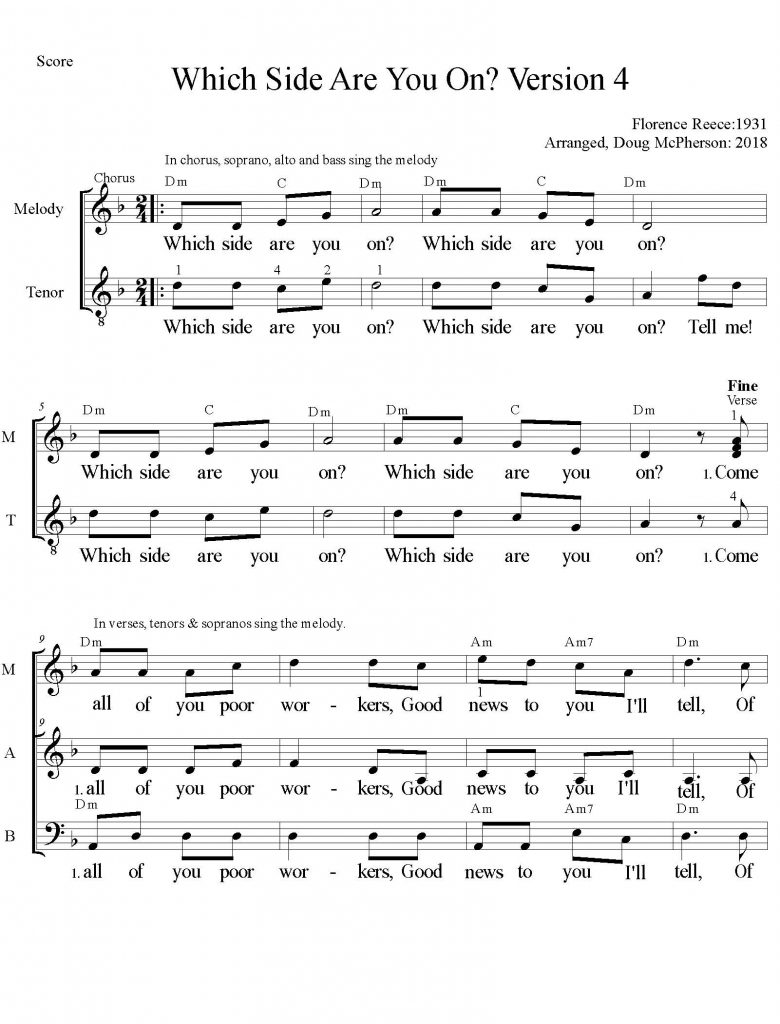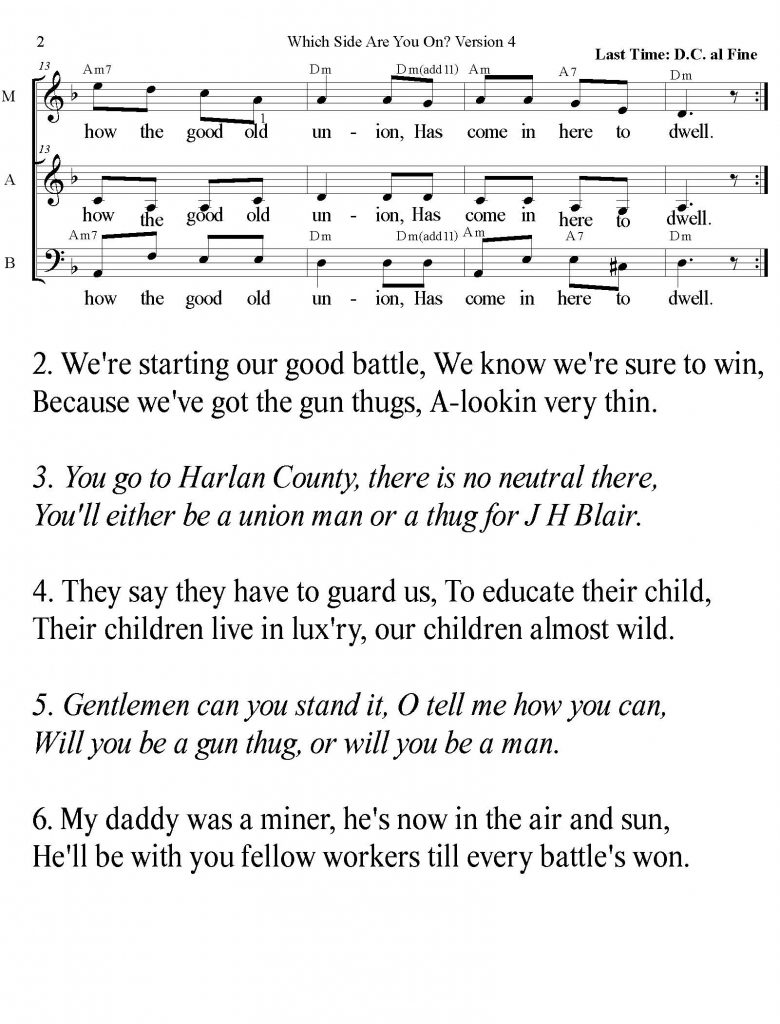This seminal song was written by Florence Reece in 1931, in Harlan County, Kentucky. These arrangements for a mixed voice choir, the Illawarra Union Singers, by Doug McPherson.
“In 1931, the miners and the mine owners of that region were locked in a bitter and violent struggle (called the Harlan County War). In an attempt to intimidate the Reece family, Sheriff J. H. Blair and his men (hired by the mining company) illegally entered their family home in search of Sam Reece. Sam had been warned in advance and escaped, but Florence and their children were terrorized in his place. That night, after the men had gone, Florence wrote the lyrics to “Which Side Are You On?” on a calendar that hung in the kitchen of her home.”
Wikipedia
Many different performances of this song can be found. These arrangements are based on a recording made by Florence Reece later in life, recorded live in a broadcast studio, and later released on the album, “Coal Mining Women”. The arrangements presented here use Florence’s words and mostly her melody line, but open with the chorus, and repeat the chorus throughout. Neither the sheet music nor the practice tracks reflect the rhythm changes needed for the words in different verses, particularly in verses 5 and 6. The arrangements are further informed by the Almanac Singers rendition of the song in 1941. Neither the sheet music nor the practice tracks reflect the rhythm changes needed for the words in different verses, particularly in verses 5 and 6.
Scroll Down, or Click Here for Arrangement 2, Melody, Alto, Tenor and Bass
Arrangement 1
Melody, Tenor and Bass: Altos could sing the bass part, an octave up in the verse.
Sheet Music: .pdf Format
Practice Tracks:
In each of these tracks the targeted voice uses a piano sound.
Harmonically, this arrangement is notated in Dm, but the melody is essentially pentatonic, and could also be considered to be in the (modern) Dorian mode of the C scale; the 6th note and 3rd notes are omitted in the melody.
Arrangement 2
This arrangement is for Melody, (Soprano and/or Tenor), Alto, Tenor and Bass. The chorus is in unison, except for a tenor harmony. In the verses, the Melody and Tenor lines are in unison, with a harmony part written for Alto voice, and a Bass line.
Sheet Music: .pdf Format
Practice Tracks
The melody and bass tracks are the same as in arrangement 1. The alto track is new, and the tenor track dispenses with harmony in the verse and reverts to the melody. The target voice uses a piano in each track, except the Alto which uses an oboe sound. The All Parts track is an experiment, and uses the sounds of a wind quartet: flute, oboe, clarinet and basoon.
Arrangement 3.2
The differences between versions 2.1 and 3, are the tenor line in the chorus and chords in the chorus, bars 3 and 7. The alto track is simplified, mirroring the melody except for the first and last bar. The practice tracks use the piano in the target voice. The all parts track uses a wind quartet.
Sheet Music .pdf Format
Practice Tracks
Practice your own part, and then try singing this with the “All Parts” track.
Arrangement 4
This arrangement contains a more fully developed alto line, and one note altered in the bass line, 2nd quaver in bar 13 changed from A to F. For melody and tenor practice tracks, see arrangement 3, above.
Sheet Music .pdf
Sheet Music .pdf Cropped
If printing the cropped music, look for a setting that says “Fit”, or “Fit to printer margins.”
Here is version 4 in .jpg format:

Notes on Recent Versions of This Arrangement
Source Recordings
Here is a recording of Florence Reece, with the pitch altered to Dm, the same key as the arrangements above.